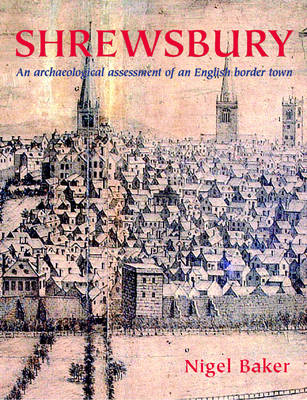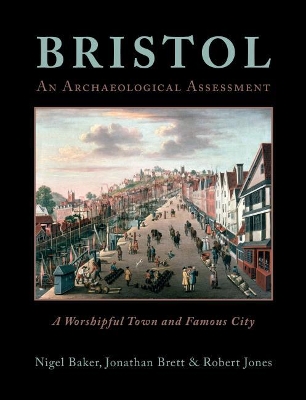Urban Archaeological Assessment
2 total works
Shrewsbury is one of England's most celebrated historic towns. It is renowned for its black and white timber-framed buildings, for the Old Market Hall, the Abbot's House on Butcher Row, and for its picturesque, winding, ancient streets. Its Georgian architecture - whether neoclassical brick or the world's first iron-framed mill - faithfully reflects the vibrancy of the town known to Charles Darwin's grandfather. But the paradox of Shrewsbury is that this extraordinarily rich townscape has until recently seen less archaeological investigation than others, more damaged and compromised, elsewhere. Many fundamental questions about its past have remained unanswered. This book is the first to pose the question - how far has the archaeological investigation of the town progressed? What is now known? What is most significant? And, above all, what are the mysteries that remain and what direction should archaeological research take in the future? This book is the outcome of a major English Heritage project, and uses the results of archaeological and historical research from the late 18th century to the present day to trace what is known of the story of Shrewsbury from its post-Roman origins up to the 1920s.
Bristol: A Worshipful Town and Famous City
by Nigel Baker, Jonathan Brett, and Robert Jones
Published 1 June 2018
Bristol is a major city and port in the south-west of England. In medieval times, it became the third largest city in the kingdom, behind London and York. Bristol was founded in the late Saxon period and grew rapidly in the 12th and 13th centuries. Initially, seaborne trading links with Ireland and France were particularly significant; later, from the 16th century onwards, the city became a focus for trade with Iberia, Africa and the New World. This led to the growth of new industries such as brass manufacture, glass production and sugar refining, producing items for export and processing imported raw materials. Bristol also derived wealth from the slave trade between Africa and the New World. The city has a long history of antiquarian and archaeological investigation. This volume provides, for the first time, a comprehensive overview of the historical development of Bristol, based on archaeological and architectural evidence.
Part 1 describes the geological and topographical context of Bristol and discusses evidence for the environment prior to the foundation of the city. The history of archaeological work in Bristol is discussed in detail, as is the pictorial record and the cartographic evidence for the city.
In Part 2, a series of period-based chapters considers the historical background and archaeological evidence for Bristol’s development from the prehistoric, Roman and post-Roman eras, through the establishment and growth of Bristol between about 950 and 1200 AD; the medieval city; early modern period; and the period from 1700 to 1900 AD, when Bristol was particularly important for its role in transatlantic trade. Each chapter discusses the major civic, military and religious monuments of the time, and the complex topographical evolution of the city. Part 3 assesses the significance of Bristol’s archaeology, and presents a range of research themes for future research.
Part 1 describes the geological and topographical context of Bristol and discusses evidence for the environment prior to the foundation of the city. The history of archaeological work in Bristol is discussed in detail, as is the pictorial record and the cartographic evidence for the city.
In Part 2, a series of period-based chapters considers the historical background and archaeological evidence for Bristol’s development from the prehistoric, Roman and post-Roman eras, through the establishment and growth of Bristol between about 950 and 1200 AD; the medieval city; early modern period; and the period from 1700 to 1900 AD, when Bristol was particularly important for its role in transatlantic trade. Each chapter discusses the major civic, military and religious monuments of the time, and the complex topographical evolution of the city. Part 3 assesses the significance of Bristol’s archaeology, and presents a range of research themes for future research.

